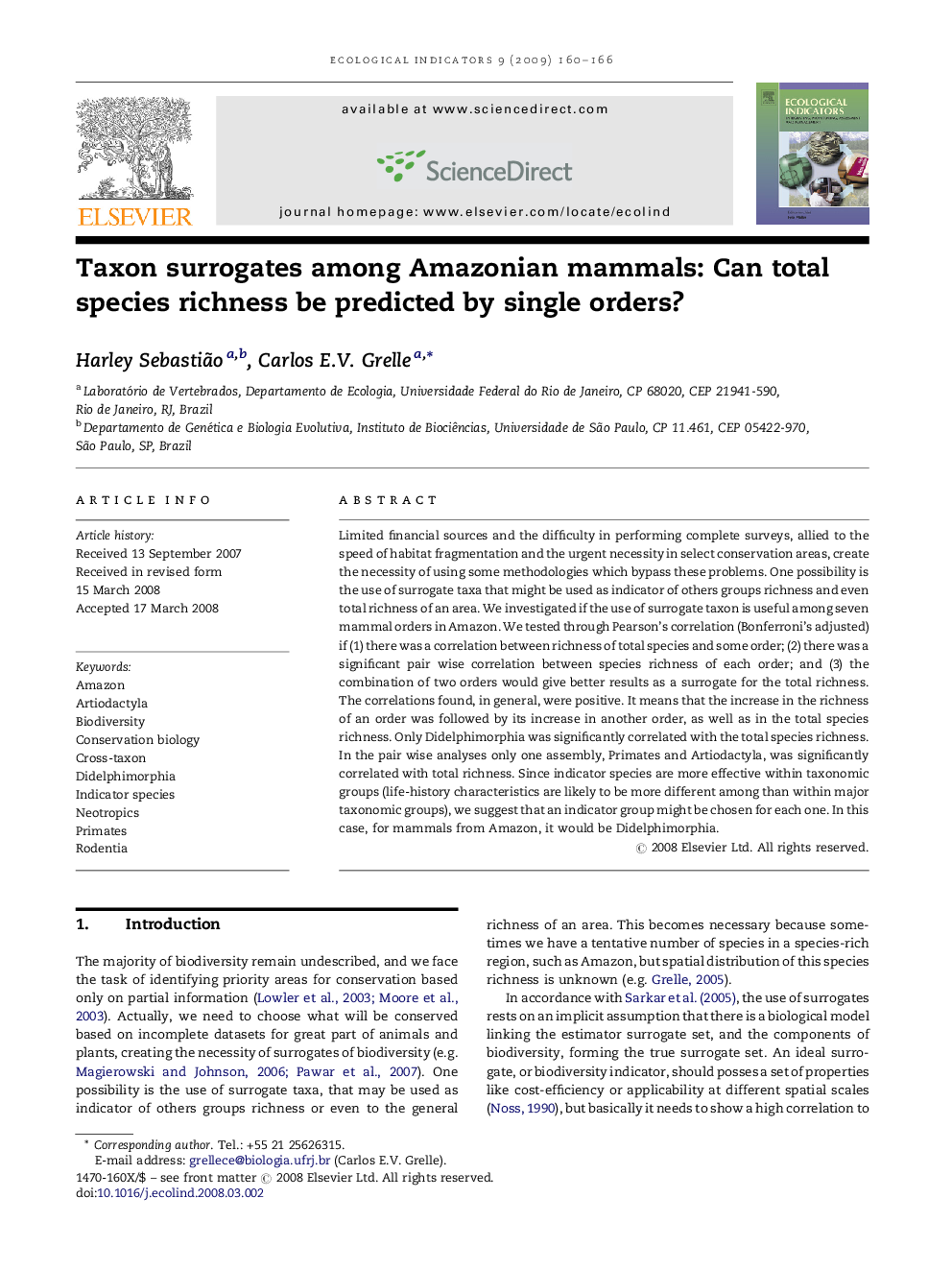| کد مقاله | کد نشریه | سال انتشار | مقاله انگلیسی | نسخه تمام متن |
|---|---|---|---|---|
| 4374564 | 1303179 | 2009 | 7 صفحه PDF | دانلود رایگان |

Limited financial sources and the difficulty in performing complete surveys, allied to the speed of habitat fragmentation and the urgent necessity in select conservation areas, create the necessity of using some methodologies which bypass these problems. One possibility is the use of surrogate taxa that might be used as indicator of others groups richness and even total richness of an area. We investigated if the use of surrogate taxon is useful among seven mammal orders in Amazon. We tested through Pearson's correlation (Bonferroni's adjusted) if (1) there was a correlation between richness of total species and some order; (2) there was a significant pair wise correlation between species richness of each order; and (3) the combination of two orders would give better results as a surrogate for the total richness. The correlations found, in general, were positive. It means that the increase in the richness of an order was followed by its increase in another order, as well as in the total species richness. Only Didelphimorphia was significantly correlated with the total species richness. In the pair wise analyses only one assembly, Primates and Artiodactyla, was significantly correlated with total richness. Since indicator species are more effective within taxonomic groups (life-history characteristics are likely to be more different among than within major taxonomic groups), we suggest that an indicator group might be chosen for each one. In this case, for mammals from Amazon, it would be Didelphimorphia.
Journal: Ecological Indicators - Volume 9, Issue 1, January 2009, Pages 160–166